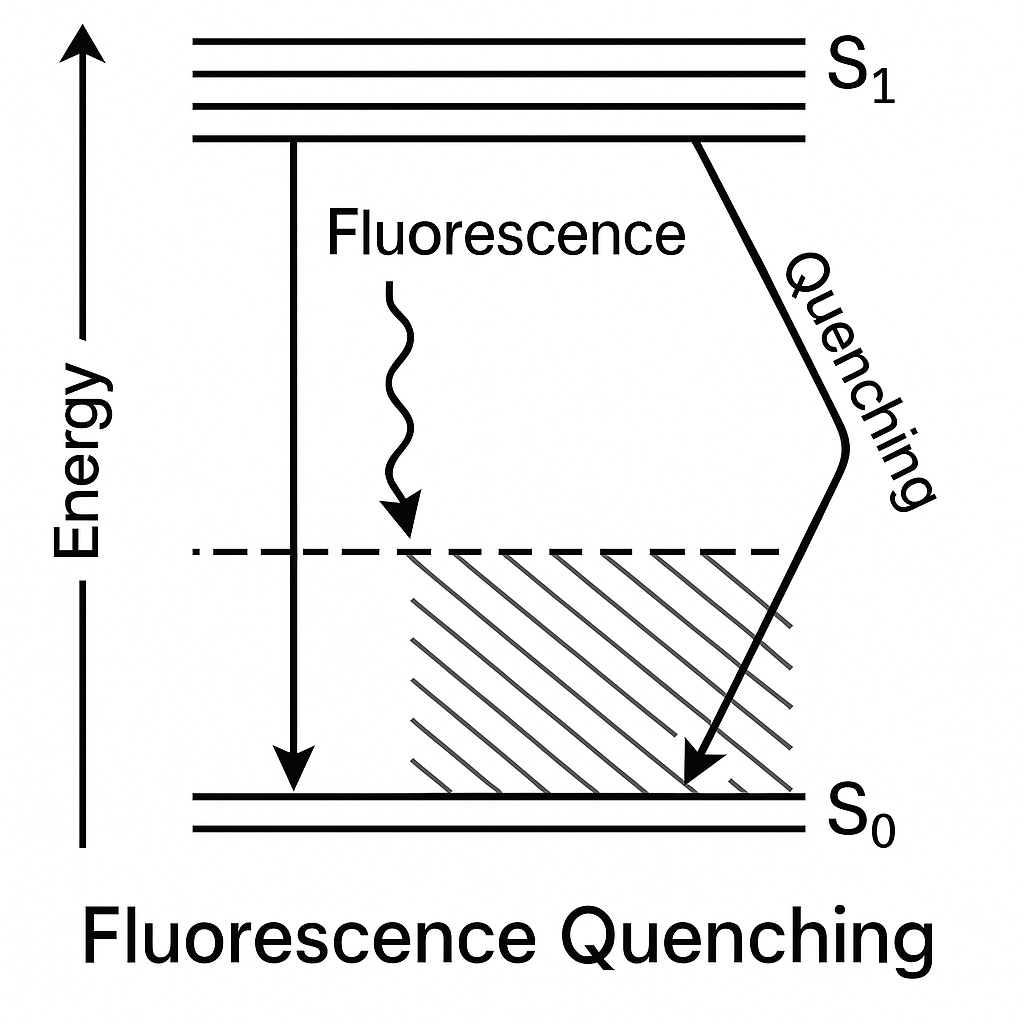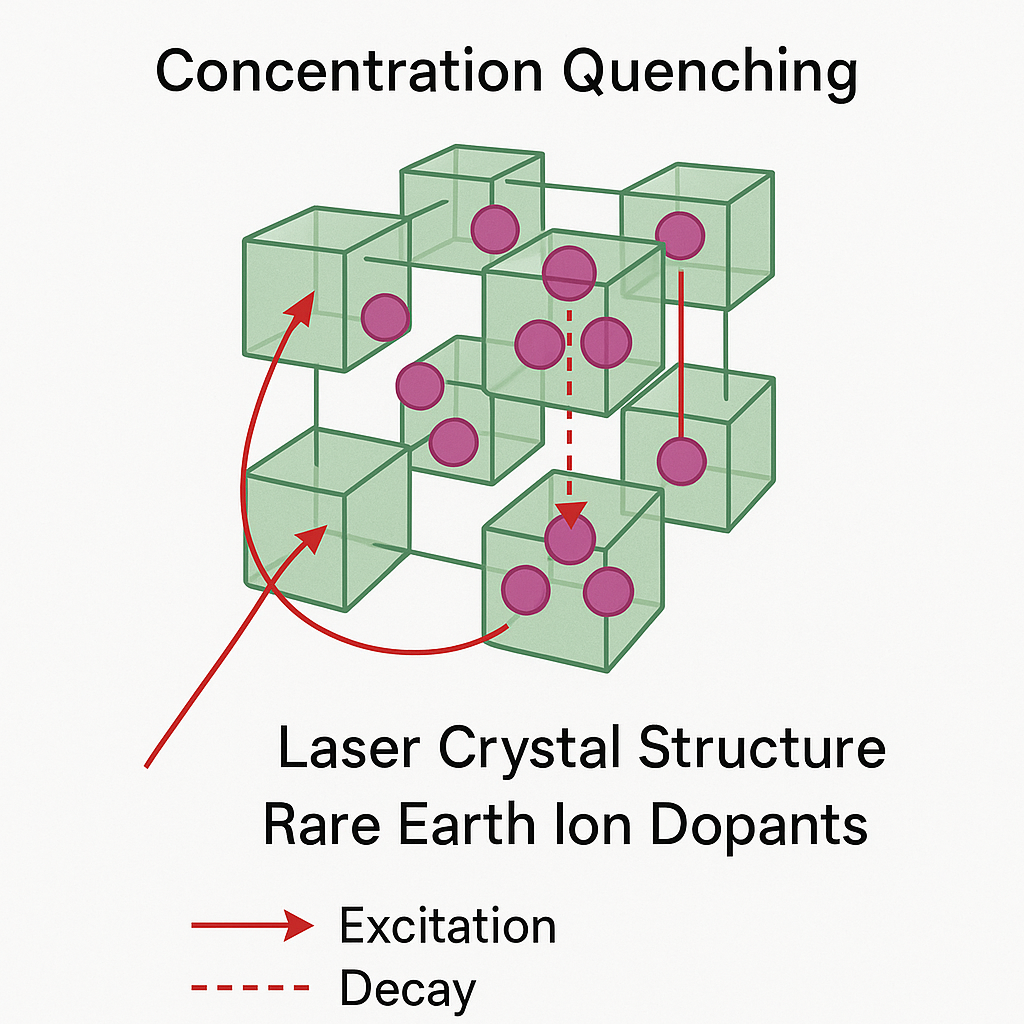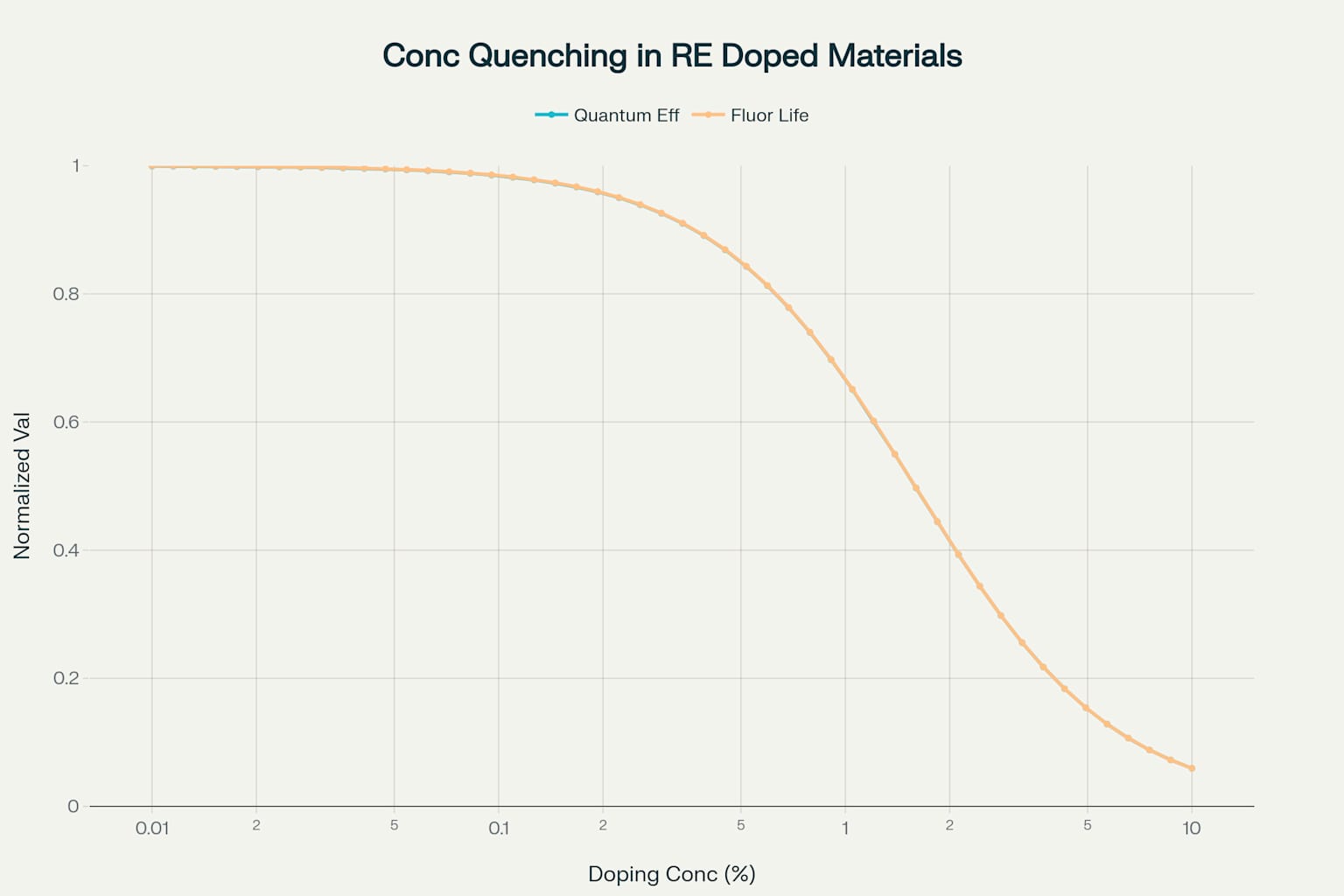Fluorescence quenching represent one of most critical phenomena affecting performance on modern laser systems an optical materials. This comprehensive guide explores mechanisms, impacts, an management strategies for fluorescence quenching in laser gain media. It offers essential knowledge for researchers, engineers, an technicians working with advanced optical systems.
Fluorescence quenching encompasses all processes that reduce fluorescence intensity an lifetime of a substance. In laser technology, this phenomenon becomes particularly significant when dealing with rare - earth - doped or transition metal - doped laser gain media, including both crystalline an glass - based materials. The process fundamentally involves reduction of excited - state lifetimes in laser - active ions. It directly impacts efficiency an performance of laser systems.
Understanding fluorescence quenching is crucial. It directly affects quantum efficiency—the ratio of photons emitted to photons absorbed. When quenching occurs, quantum efficiency decreases significantly. This leads to reduced laser performance an increased thermal management challenges.

Energy level diagram illustrating fluorescence quenching mechanisms
Multi - phonon relaxation represents one of fundamental quenching mechanisms in laser materials. This process occurs when excited electrons lose energy through vibrational modes within crystal lattice rather than emitting photons. The energy dissipates as heat through atomic vibrations. It creates a non - radiative pathway that competes with desired fluorescence emission.
Significance of multi - phonon relaxation depends heavily on energy gaps between electronic levels an phonon energies of host material. When these energy gaps are small relative to phonon energies, multi - phonon relaxation becomes increasingly probable. This leads to enhanced quenching effects.
Concentration quenching poses perhaps most significant limitation in high - performance laser materials. This phenomenon occurs when laser - active ions cluster together at high doping concentrations. It creates efficient pathways for energy transfer between neighboring ions. The clustering effect becomes particularly problematic when attempting to achieve high gain in compact laser systems.

Rare earth doped laser crystal showing concentration quenching effects
The mechanism involves energy transfer processes between laser - active ions. Excited states interact through dipole - dipole coupling or exchange interactions. When clustering occurs, multiple ions can participate in energy transfer cascades. They effectively remove excitation energy from laser system without contributing to stimulated emission.
Research has shown that concentration quenching follows predictable patterns that can be modeled an optimized. The critical concentration threshold varies significantly depending on host material properties an specific dopant ions used.

Concentration quenching effects showing decreased quantum efficiency an fluorescence lifetime with increased doping concentration
Unwanted impurities present another major source of fluorescence quenching in laser materials. These impurities can originate from raw materials or be introduced during crystal growth processes, including contamination from crucibles used in high - temperature synthesis. Common quenching impurities include transition metals such as iron, chromium, an copper. They create highly efficient non - radiative relaxation pathways.
Impact of impurity - induced quenching extends beyond simple energy loss. Trace amounts of certain impurities can dramatically reduce quantum efficiency. This makes material purity control critical in laser material manufacturing. It requires careful selection of raw materials an processing conditions.
Crystal defects, also known as color centers, serve as energy traps that can effectively quench fluorescence. These defects arise from irregularities in crystal structure, including vacancies, interstitials, an dislocations. When excited ions transfer energy to these defects, energy dissipates non - radiatively rather than contributing to useful laser emission.
Formation of structural defects can be influenced by various factors, including crystal growth conditions, thermal treatments, an radiation exposure. Understanding an controlling these defects is essential for optimizing laser material performance.
Fluorescence quenching directly affects quantum efficiency of laser materials. Quantum efficiency represents probability that an absorbed photon will result in fluorescence emission. In ideal conditions, quantum efficiency approaches unity. But quenching processes can reduce this value significantly. The reduction in quantum efficiency translates directly to decreased laser gain an increased heat generation within gain medium.
When upper laser levels experience quenching, threshold pump power required for laser operation increases substantially. This occurs because more pump energy is needed to maintain necessary population inversion despite enhanced non - radiative losses. For laser amplifiers, quenching results in reduced gain coefficients. It limits amplification capabilities.
Quenching processes convert optical energy into heat. This creates significant thermal management challenges in high - power laser systems. This heat generation can lead to thermal lensing effects, beam distortion, an potential damage to gain medium if not properly managed. The thermal load also affects overall efficiency of laser system. It requires additional cooling systems an power consumption.
Relationship between quenching an laser threshold power is particularly critical for practical laser design. As quenching increases, minimum pump power required to achieve laser oscillation rises proportionally. This relationship affects overall efficiency an practicality of laser systems, especially in applications requiring compact, low - power operation.
While often viewed as detrimental, certain quenching processes prove essential for proper laser operation. Some quenching mechanisms help populate upper laser levels through energy transfer from higher - lying pump states. They effectively serve as intermediate steps in pumping process. This aspect of quenching can actually enhance laser efficiency when properly managed.
Quenching can beneficially reduce lifetime of lower laser levels. It helps maintain population inversion by preventing bottlenecking in lower energy states. This characteristic is particularly important in quasi - three - level laser systems where lower laser level may be thermally populated at operating temperatures.
Controlling dopant concentration represents most straightforward approach to managing concentration quenching effects. Research has established optimal doping levels for various host - dopant combinations that maximize efficiency while minimizing quenching losses. These optimal concentrations represent a balance between achieving sufficient gain an avoiding excessive quenching losses.
Selecting appropriate host materials with high dopant solubility an favorable phonon properties can significantly reduce quenching susceptibility. For example, phosphate glasses demonstrate superior performance compared to silicate glasses for certain rare - earth dopants. This is due to reduced clustering tendencies an improved energy transfer characteristics.
Strategic co - doping with sensitizer ions can help distribute energy more effectively throughout gain medium. This approach reduces local concentration effects while maintaining high overall efficiency. Sensitizer ions can also provide alternative energy transfer pathways that bypass problematic quenching mechanisms.
The Stern - Volmer equation provides a quantitative framework for analyzing quenching processes. This approach relates fluorescence intensity changes to quencher concentration. It helps distinguish between static an dynamic quenching mechanisms. The analysis enables researchers to determine quenching constants an understand underlying physics of quenching process.
Advanced time - resolved techniques offer direct insight into quenching effects by monitoring changes in excited state lifetimes. Methods such as time - correlated single - photon counting enable precise characterization of quenching processes. They provide essential data for material optimization an system design.
Emerging approaches to quenching management include development of nanostructured gain media. These can provide improved control over ion distribution an energy transfer processes. These materials offer potential for reduced quenching while maintaining high optical quality an gain characteristics.
The development of sophisticated theoretical models continues to advance our understanding of quenching phenomena. Monte Carlo simulations an quantum mechanical calculations provide insights into fundamental mechanisms underlying quenching. They enable more effective material design strategies.
Research into new host materials with inherently low quenching susceptibility represents an active area of investigation. These materials may offer improved performance characteristics while maintaining practical advantages of conventional laser materials.
Understanding quenching mechanisms is critical for designing high - power laser systems where thermal management an efficiency are paramount. Proper quenching control enables development of more compact, efficient laser systems with improved beam quality an reduced cooling requirements.
In fiber laser systems, quenching control is essential for achieving high gain in relatively short fiber lengths. The confined geometry of fiber systems makes concentration quenching particularly problematic. It requires careful optimization of dopant concentrations an fiber design parameters.
Fluorescence quenching represents a fundamental phenomenon that significantly impacts laser material performance an system design. While quenching processes can limit laser efficiency through unwanted energy losses, they also play essential roles in proper laser operation when properly understood an managed. Success in laser material development requires careful consideration of quenching mechanisms. This includes selection of host materials an dopant concentrations, an implementation of advanced mitigation strategies.
As laser technology continues advancing toward higher powers an improved efficiencies, mastering principles of fluorescence quenching becomes increasingly critical for developing next - generation optical systems. The ongoing research in this field promises new approaches to quenching control an novel materials that will enable even more capable laser technologies.
The comprehensive understanding of fluorescence quenching mechanisms, measurement techniques, an mitigation strategies presented in this guide provides foundation for optimizing laser material performance an advancing field of laser technology. By applying these principles, researchers an engineers can develop more efficient, reliable, an powerful laser systems for a wide range of applications.
Contact: Jason
Phone: +8613337332946
E-mail: [email protected]
Add: Hangzhou City, Zhejiang Province, China